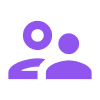In response to the labor market shortage, HR expert Ravin Jesuthasan argues that organizations must move away from thinking in terms of positions. He makes a case for connecting employees to available work in smart ways. How can you make this happen?
Will the permanent job go?
Late last century (1995), William Bridges predicted in his bestseller “Jobshift, the steady job is going,” that in a dynamic society there would no longer be room for 40 years of loyal service and a gold watch. The rapid changes would force organizations to work in a different, more flexible way, and that would also apply to employees. William was proven right. The Netherlands has more than 1 million ZZP’ers, min-max and 0-hour contracts and employees who (of necessity) have multiple jobs. However, now that the job market is record tight, organizations are still offering employees permanent contracts again. So the answer to the question of whether the permanent job went there before is yes! But … Are we returning to the past and do functions still have a future?
Goodbye features, adieu SNIFOs
According to Jesuthasan, the function is the next rudiment from the last century to go. In the book “Work without jobs” written with John Boudreau, he argues that we must move away from a system based on jobs. The approach is to connect employees smarter with available work. Closer to home, Rolf Baarda of Bureau Baarda has been proclaiming for 25 years that positions no longer work, they create inflexibility and are an obstacle to finding the right people. According to him, the solution lies in finding what employees are good at and giving them room to excel at it. Performing then becomes thriving.
A nice side benefit is that there is no more room for SNIFOs. These are rigid employees who, under the guise of State Not In My Job Description, stick to what is familiar to them and are anything but flexible.
What is the thrust of role descriptions?
Many service organizations have been working for years with so-called role descriptions and less from tasks and functions. Employees participate in projects and teams in which they are used to their strengths. Based on the project and team plans, the qualities needed to achieve the objectives are determined. Then those employees are put together in a team who collectively possess those qualities, and complement each other, to make the project a success. If necessary, “leftover” work is outsourced to freelancers, temps and interim employees working on a project basis.
When Michelangelo was asked how he created the statue “David,” he replied that he chiseled away everything that did not look like David. Workers can do the same with their jobs: take away what they don’t like and keep what is nice: jobcrafting.
Fun makes it run and reinforce what works!
So the starting point in dividing the work is the employee and his strengths. ‘So not spending 60 percent of the time doing things that don’t align with strengths but, say, 20 percent of the time,’ Jesuthasan said. ‘Furthermore, boring chores can also be done by a computer, there are so many smart automations you can employ. It would be good if employers started thinking about that. It also makes employees happier, they are so much more than their jobs’. That leveraging your employees’ strengths can make everyone happy is also proven by this video.
Job and role descriptions are not mutually exclusive and, especially in service organizations, can be mutually reinforcing in guiding employee outcomes, commitment and development. Together, they form a total instrument to let the realization of organizational goals go hand in hand with performance, job satisfaction, sustainable employability of employees.
Want to know more?
Want to know more about the planning conversation (goals conversation)? And how to renew them? Also read our blog “Preparing for the planning interview: tips and examples




























